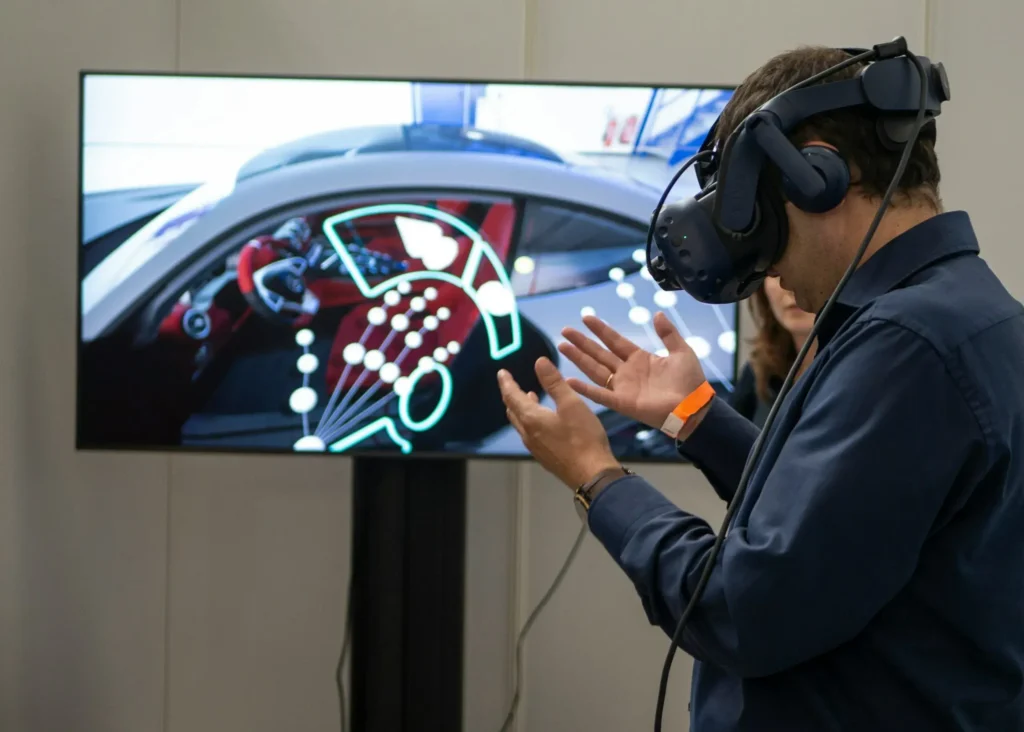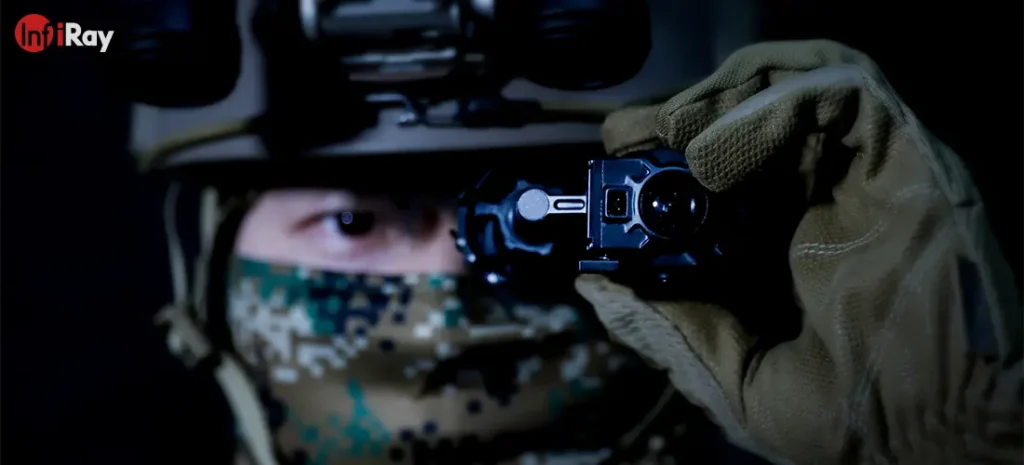How Do You Hide From Military Heat Sensor Technology? In today’s world, military heat sensor technology plays a significant role in detecting human presence. Heat sensors, also known as thermal imaging or infrared sensors, detect the heat emitted by objects, animals, or people. Military forces use this technology in various applications, including surveillance, target acquisition, search and rescue, and security operations.
If you’re curious about how people might hide from military heat sensor technology, it’s important to understand how these sensors work and the different techniques that might be employed to avoid detection. While we strongly advise against using these techniques for illegal purposes, knowing about this technology and its limitations can be interesting and educational.
This guide will dive into the details of how thermal imaging works, techniques for avoiding detection, and the limitations of the technology. We’ll also explore legal and ethical considerations.
How Do You Hide From Military Heat Sensor Technology?

What is Military Heat Sensor Technology?
Heat sensor technology, commonly used by militaries, operates on the principle of detecting infrared radiation, which is a type of electromagnetic radiation emitted by all objects that have a temperature above absolute zero. This radiation is invisible to the naked eye but can be captured by thermal imaging cameras.
Thermal imaging devices are highly sensitive and can detect minute differences in temperature. These devices produce images called thermograms, which show different objects in varying shades of color based on their temperature. Hotter objects appear in brighter colors, while cooler objects are displayed in darker shades.
How Military Heat Sensors Are Used
Military forces use heat sensor technology in several key areas, including:
- Reconnaissance and surveillance: Thermal sensors help detect human movement, even at night or in obscured conditions like fog or smoke.
- Search and rescue operations: These sensors can locate people who are trapped or lost in dangerous situations.
- Target acquisition and missile guidance: Heat signatures from vehicles, equipment, or personnel help guide missiles and other military systems.
Can You Hide from Military Heat Sensors?
While avoiding detection by military heat sensors is difficult, it’s not entirely impossible. However, keep in mind that these methods are primarily theoretical, used in survival situations, or employed in military training or law enforcement evasion tactics. They are not foolproof, and heat sensor technology continues to improve.
Let’s explore some ways that people might attempt to hide from thermal sensors:
Use of Insulating Materials
Insulating materials can block or absorb the heat emitted by your body. When strategically placed between you and the heat sensor, these materials can significantly reduce the infrared signature visible to the sensor.
Types of Insulating Materials:
- Mylar Blankets (Space Blankets): Mylar is a highly reflective material that can reduce infrared heat emissions. Space blankets are often used in survival situations to reflect body heat, and they can also serve to obscure heat signatures when used effectively. Military personnel sometimes use these in certain survival kits to avoid detection.
- Thermal Blankets: Similar to mylar blankets, specially designed thermal blankets can reduce a person’s heat signature, making it harder for thermal sensors to pick up their location.
- Foam Insulation: Dense foam can block or dampen heat signals. In some cases, foam insulation materials are placed on shelters or vehicles to prevent detection by thermal cameras.
Limitations:
- Insulating materials only work when covering the heat source entirely. Any exposed skin or body heat will still be visible to thermal imaging sensors.
- Prolonged use can lead to overheating, as heat remains trapped under the insulation.

Mud or Thick Vegetation
Covering yourself with thick mud or hiding in dense vegetation can provide a degree of insulation, blocking heat from escaping directly into the environment. This method has been depicted in popular culture (such as in movies), and while it has some basis in reality, it’s far from perfect.
How It Works:
- Mud: A thick layer of mud acts as a natural insulator, absorbing heat from your body and preventing infrared radiation from being emitted outward. However, the effectiveness of this method depends on the consistency and thickness of the mud.
- Vegetation: Trees and dense bushes can also obstruct heat sensors, especially when the environment around you is close in temperature to your body. Hiding under dense foliage can help reduce your heat signature, but it’s not a foolproof solution.
Limitations:
- Mud dries quickly, especially in hot environments, and loses its insulating properties.
- Vegetation might not provide adequate coverage in all conditions, particularly in open or less dense areas.
Creating a Cold Environment
One way to lower your heat signature is to decrease the difference in temperature between your body and the surrounding environment. Military thermal sensors work by detecting temperature differences, so blending into a cold environment can make you less visible.
Techniques:
- Cold Water: Submerging yourself in cold water can reduce the heat you emit, making you less detectable by infrared sensors. In practice, this could involve hiding in cold streams, lakes, or other bodies of water.
- Cold Weather Conditions: In cold environments, such as snowy regions or at night when temperatures drop significantly, it becomes harder for thermal sensors to distinguish human heat signatures. This natural camouflage works because the human body emits less heat in these conditions.
Limitations:
- Extended exposure to cold environments or water can lead to hypothermia, which is a dangerous condition that occurs when the body loses heat faster than it can produce it.
Use of Decoys
Decoys can be an effective way to confuse military heat sensors. By creating fake heat signatures, you can draw attention away from your real location.
Types of Decoys:
- Heated Objects: Using objects that emit heat, such as heated stones or small campfires placed away from your location, can create misleading heat signatures. These decoys may trick thermal sensors into focusing on the wrong target.
- Drones or Equipment: Drones or other machinery equipped with heat-producing equipment can be used to simulate a human presence and divert attention.
Limitations:
- Decoys only work temporarily. Once the source is inspected or analyzed, the ruse can be easily discovered.
- Using heated decoys can create risks, such as exposing your actual location through movement or leaving behind traces.

Specialized Clothing
Advancements in technology have led to the development of specialized clothing designed to block or reduce infrared radiation. Some military and law enforcement agencies are already experimenting with this technology to counter thermal imaging devices.
Types of Specialized Clothing:
- Thermal Camouflage Suits: These suits are designed to limit the heat emitted by the wearer, using materials that either absorb or block infrared radiation. This type of gear is often used by special operations forces to avoid detection.
- IR-Reflective Materials: Certain fabrics are embedded with infrared-reflective materials that bounce heat away, making the wearer more difficult to spot with heat sensors.
Limitations:
- Specialized clothing is expensive and generally not available to civilians. Its effectiveness also depends on environmental factors like humidity and temperature.
Also read D Sign Technologies Ultra Drone
Hiding Behind or Inside Objects with Similar Heat Signatures
Objects with similar thermal profiles to the human body can sometimes provide temporary cover from heat sensors. For example, hiding behind or within heated vehicles, warm buildings, or areas that radiate heat can make it harder for sensors to distinguish between you and your surroundings.
How It Works:
- Vehicles: The heat emitted by a vehicle’s engine can mask your heat signature if you stay close enough.
- Heated Buildings: Standing near a heated structure can blur the lines between your body’s heat and the ambient warmth of the building.
Limitations:
- These methods only work when the object’s heat signature is close enough to your body’s temperature to confuse the sensor.
- If the object cools down or the sensor has a high enough resolution, the distinction will become clear.
Limitations of Military Heat Sensors
While military heat sensors are highly effective, they are not without limitations. Understanding these weaknesses can help explain why certain evasion tactics might work in specific situations.
- Environmental Factors: Rain, fog, and heavy vegetation can affect the accuracy of thermal imaging sensors. These conditions create visual noise, making it harder for the sensors to detect precise heat signatures.
- Resolution and Range: The effectiveness of thermal sensors depends on their resolution and range. Lower-resolution sensors may have trouble distinguishing between objects with similar heat profiles. Similarly, objects that are far away may appear less distinct.
- Cooldown Times: If you’ve recently been in a warm environment, your body or clothing may still emit residual heat, making you visible to infrared sensors. Conversely, staying in a cold area for an extended period can reduce the heat you emit, making detection harder.
- False Positives: Heat sensors sometimes pick up non-human sources of infrared radiation, such as animals, heated rocks, or machinery. While modern systems can often differentiate between humans and other objects, there’s always the potential for mistakes, especially in complex environments.
Conclusion
While it’s intriguing to explore how one might evade detection from military heat sensors, it’s crucial to remember the legal and ethical implications. Using these techniques for criminal or harmful purposes can have severe consequences. Avoiding detection by law enforcement or military forces could result in legal action and jeopardize your safety and the safety of others.
Instead, this knowledge is best used in survival training, educational purposes, or understanding the technology behind thermal imaging. If you find yourself in a situation where you need to hide for legitimate reasons (such as wilderness survival), employing natural camouflage and understanding how thermal sensors work could be useful.
By understanding the science behind these sensors, as well as their limitations, you can gain a better appreciation of how military technology continues to evolve.
